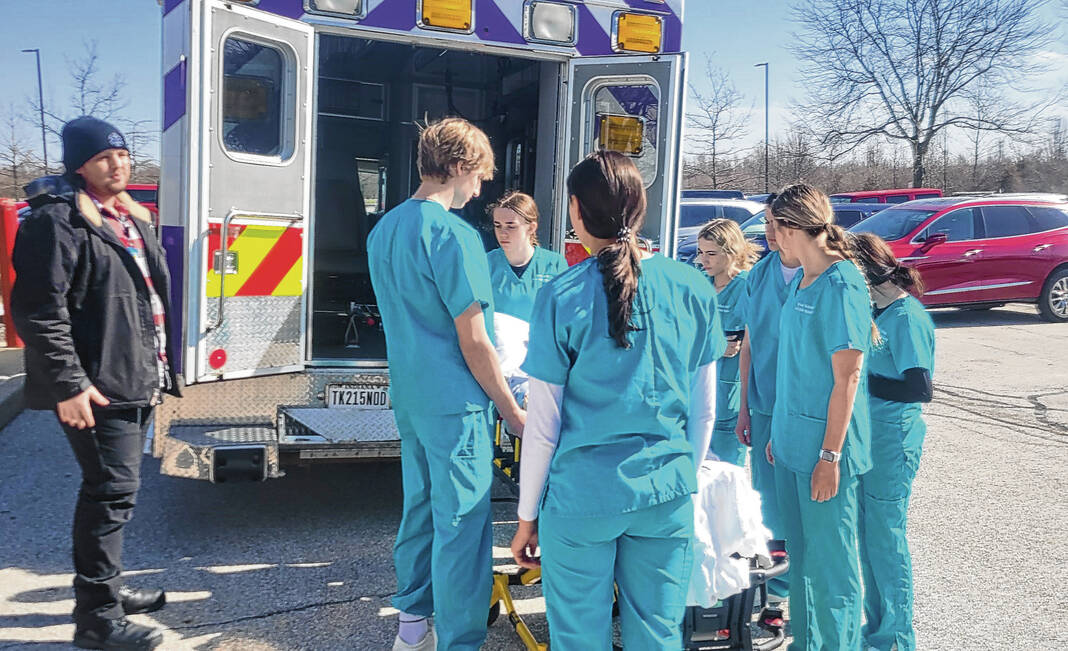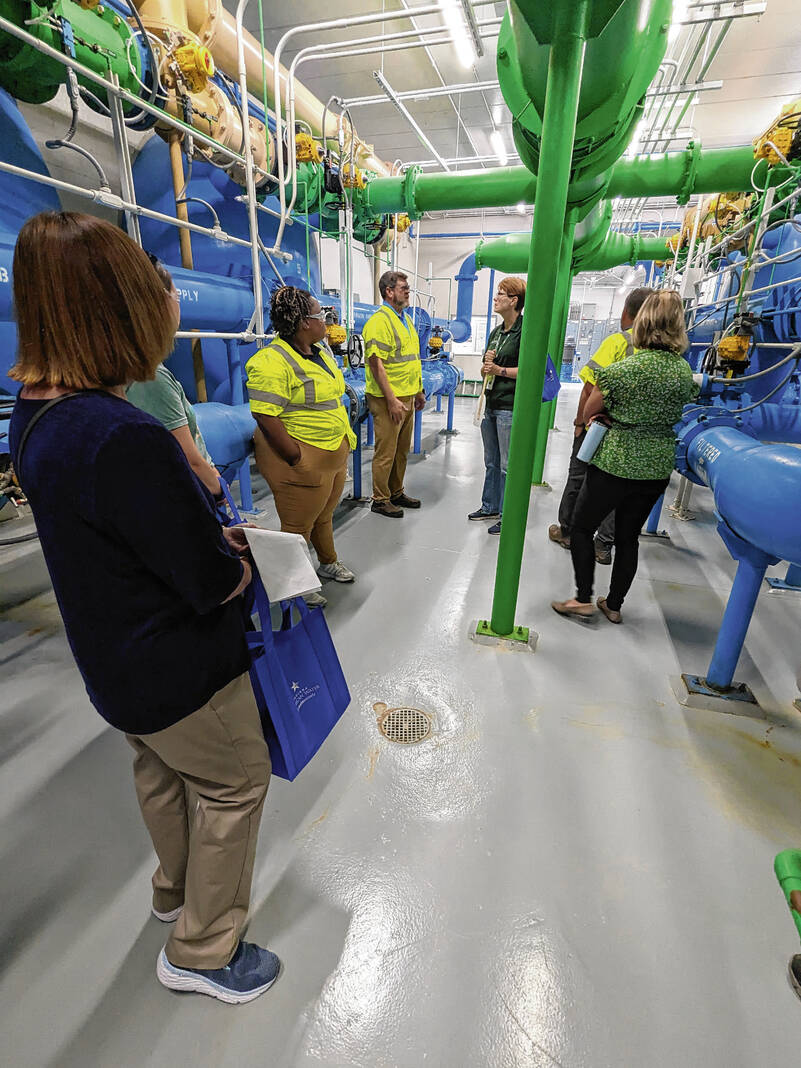In the last year, students have used virtual reality to envision working in a hospital and spent their afternoons working on engineering projects.
These unique programs were made possible by Aspire Johnson County’s school-to-work program, which connects Johnson County students with employment opportunities. The program is just getting started, Aspire leaders say.
During the inaugural 2022-23 school year, members of Aspire were able to engage with 524 business leaders to provide opportunities for students, who could apply to work for their companies after graduation or intern with them while they’re still in school. More than 1,000 students participated in opportunities including virtual and in-person tours of local companies, such as KYB and Milwaukee Tool, and took a field trip to the Cyber Academy at Muscatatuck Urban Training Center in Butlerville. Aspire officials also worked with 475 teachers and counselors who could expose students to more local job and career opportunties, according to Aspire’s first annual school-to-work report card.
The initiative has a dual benefit. Students get an advanced look at careers they might not have previously considered, while companies get access to a deeper pool of future candidates, said Jennifer Hollingshead, Aspire’s school-to-work specialist.
“This school year, I think we’ll be doing the same activities that were more successful and then I am looking into planning some new things, such as a trade expo for high school students where they’d be able to come and try out different hands-on activities,” she said. “I’m also considering a presentation where employers can talk about what soft skills are needed in the workplace, like communication, leadership and problem solving, so high school students can hear about the importance of those from someone other than their teachers or parents.”
Stephanie Senac, a capstone coordinator at Greenwood Community High School, attended three teacher field trips, with visits to Roy Umbarger & Sons, Greene Crop Consulting and Crystal Springs Grain over the summer.
“In senior year at Greenwood High School, the students do a senior capstone project where they have a mentor they spend 15 hours with in a certain field,” Senac said. “A lot of these students don’t know what jobs are out there. Going on these field trips, I can talk to these students and ask, ‘do you have an interest in this field? I have connections where you can find a mentor.’”
Maddie Waters, who teaches business classes at Greenwood, said Hollingshead reached out about starting the school-to-work program in March of last year. Waters, who has a background in accounting and recruiting, said it would be a great idea.
During the 2022-23 school year, Waters invited speakers from various companies, including WalkerHughes Insurance, Louisville & Indiana Railroad and Hirons to speak to students about what opportunities they had available, Waters said.
“We invited employers to come in and talk to kids about jobs, the work experience they want and what they’re looking for in employees,” she said. “It’s nice for them to hear it from a third party, it drives home the point ‘this is what we’re looking for, here’s what we need with professionalism.’ It’s good for them to hear it from multiple sources and they’re able to ask questions about banking, for example, that I couldn’t answer. They’ve been able to give them that knowledge.”
The school-to-work program has also given students exposure to opportunities in the medical field. Armetris Forman, the education outreach coordinator for Franciscan Health in central Indiana, visited students at Greenwood, Clark-Pleasant, Franklin, Center Grove and Indian Creek schools. During her visits, students practiced CPR on dummies and used virtual reality headsets to practice putting personal protective equipment on in a hospital, Forman said.
This year, students will have the opportunity to take part in a work study program, where they’ll spend half the school day at their home school and the other half in the hospital, shadowing medical personnel and learning more about the field, she said.
“The biggest benefits with being in the medical field is you’re always going to have a job. There will always be people who need to be taken care of, it’s one of the jobs that will never go away,” Forman said. “They can go to school during the day and get the classroom portion and then come to the hospital and partner with an employee and get their clinic hours and help them study for their state exam. Then, they’ll take the state exam and become certified and slide into a position.”
The increased interaction between students and employers has already made a difference, said Nicole Otte, director of workforce development for Endress+Hauser.
Along with having apprenticeship programs, Endress+Hauser has appeared at high school career fairs and gotten students internship opportunities in engineering, business and sales, Otte said.
“I’ve definitely seen an increase in conversation with educational leaders, it’s a collaborative effort,” she said. “The conversation has opened doors for educators and industry partners.”










